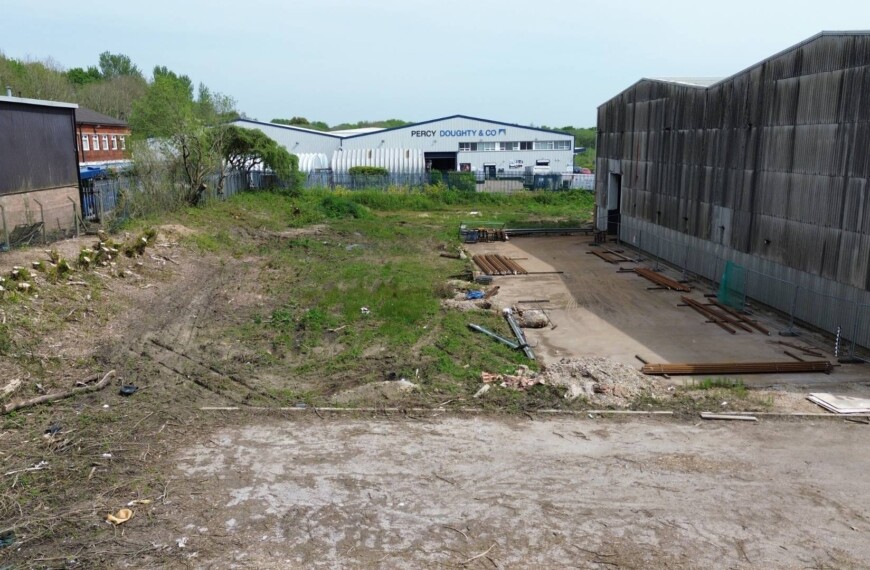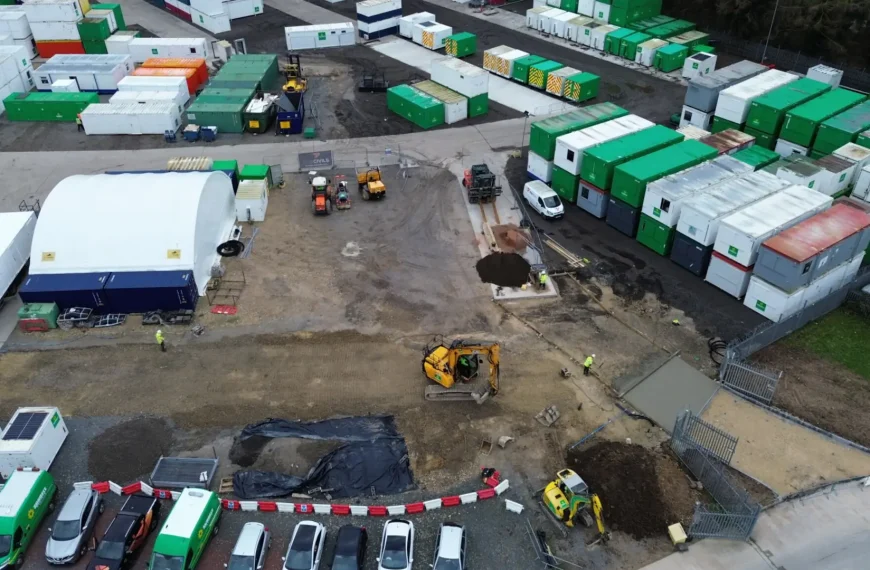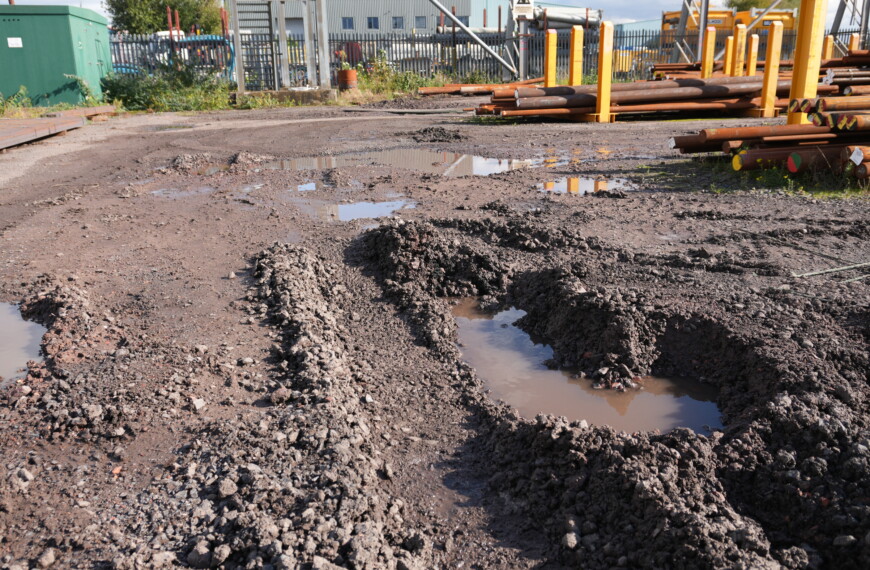
From ground level, everything looks normal. Vehicles are moving. Operations are flowing. The surface looks usable.
But just beneath the tyres, deterioration is quietly building. Each crack, each shallow depression, each patch that doesn’t quite hold – they’re the early warnings of a much bigger failure.
And when it goes, it doesn’t just break the surface. It breaks your budget, your compliance record, and potentially your entire operation.
Why this matters now
Potholes aren’t a small maintenance nuisance. They’re one of the most expensive recurring issues across UK industrial yards – and the problem is accelerating.
- A single commercial site can spend from a few thousand up to £20,000+ per year chasing pothole repairs
- In high-traffic environments like ports and manufacturing yards, each reactive repair costs £71–£87, while planned repairs are cheaper but rarely keep up with demand
- Vehicle damage piles on: £575 per HGV or £247 per van per incident from pothole impacts
That’s before you count downtime, disruption, and compensation claims.
What’s really happening beneath the surface
When a pothole shows up, it’s already late in the story. The damage started months or years earlier.
- Water infiltration: Poor drainage and worn surfaces let water penetrate, weakening the sub-base.
- Foundation fatigue: Heavy vehicle traffic compresses weakened layers, creating voids.
- Patchwork traps: Temporary fills never address the underlying failure – meaning new potholes form faster each time.
What looks like a single pothole is often a symptom of systemic yard failure.
The compliance and liability squeeze
Facilities can no longer afford to treat potholes as “just maintenance.”
- Safety risks: Trips, falls, and vehicle collisions linked to yard defects can trigger insurance claims and regulatory action.
- Environmental rules: Surface breakdown and poor drainage raise the risk of contaminated runoff breaching SuDS requirements.
- Asset value: Repeated visible defects undermine long-term property value and rental potential.
What starts as a few square inches of missing tarmac can quickly escalate into a compliance headache.
Why delay multiplies the cost
Short-term fixes feel cheaper. But they rarely are.
- Reactive pothole repairs are 3–5x more expensive than planned, structured yard upgrades
- Costs don’t stop at the patch: damaged fleets, lost production hours, and compensation claims can dwarf the repair bill.
- Annual spend snowballs: one logistics operator reported their patching budget grew every year until they invested in a full yard rebuild.
Potholes aren’t a static problem. Left alone, they spread.
What the evidence shows works
The cycle can be broken — but only by addressing the causes, not the symptoms.
- Full yard upgrades: Rebuilding the pavement structure (sub-base + surface) and upgrading drainage creates a yard that stays pothole-free for decades
- Reinforced surfacing systems: Stronger base layers resist heavy HGV loading and prevent premature cracking.
- Integrated drainage: Stops water ingress — the number one cause of potholes.
One facility that committed to a full upgrade cut their pothole-related maintenance spend from five figures a year to nearly zero.
Ben’s perspective
We often get the same call: “We’ve patched this spot five times already, and it’s back again.” By the time that phone call happens, the surface has already lost integrity.
Three lessons we’ve learned in the field:
- Potholes aren’t the problem – they’re the symptom. If you don’t solve the drainage and sub-base, you’ll see them again.
- Today’s HGVs are heavier than yesterday’s yards were built for. Future-proofing isn’t optional.
- Waiting is the most expensive option. Planned upgrades always beat emergency shutdowns and reactive repairs.
What you can do now
In the next 30 days:
✅ Map reoccurring pothole hotspots
✅ Log repair spend vs downtime/vehicle damage costs
✅ Commission a yard condition survey
In the next 90 days:
✅ Build a costed upgrade vs patching comparison
✅ Create a phased resurfacing and drainage plan
✅ Factor compliance standards into your strategy
For the long term:
✅ Upgrade yard bases with reinforced systems
✅ Build capacity for heavier traffic and EV infrastructure
✅ Lock in preventive maintenance to extend yard life
The takeaway
Every pothole is a warning sign. Ignore it, and you’re committing to endless repair cycles, spiralling costs, and growing compliance risks.
But with a strategic approach, you can eliminate the problem – not just patch over it.
👉 PKB Civils helps facilities move from patchwork repairs to permanent yard solutions. Get in touch for a strategic review of your site and put potholes behind you for good.

 0161 533 0921
0161 533 0921  info@pkbcivils.com
info@pkbcivils.com 


